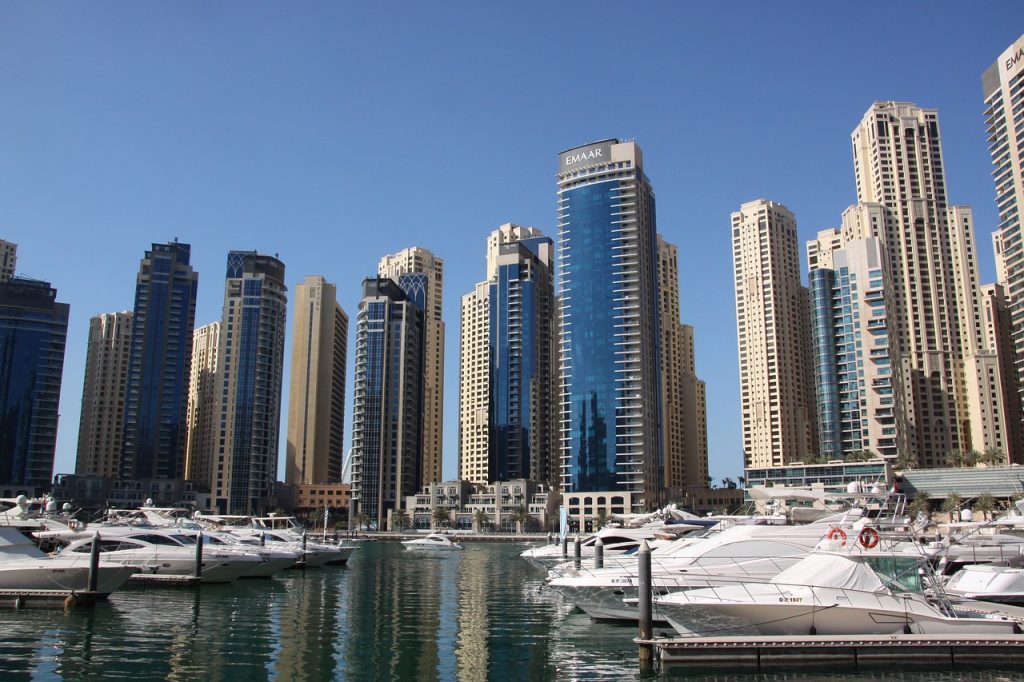“The humble brick is a foundational element in construction, symbolizing durability, tradition, and craftsmanship. Choosing the correct brick makers and suppliers is a pivotal decision in any construction project, influencing the final result’s structural integrity and aesthetic appeal. This article delves into brick craftsmanship, exploring the finest brick makers and suppliers and their impact on the construction landscape.
The Significance of Quality Bricks:
Bricks, often referred to as the “building blocks” of construction, play a crucial role in determining the strength and longevity of a structure. Quality bricks provide structural stability and contribute to the overall visual appeal of the building. Therefore, selecting reputable brick makers and suppliers is a decision that architects, builders, and homeowners should consider carefully.
Expertise in Brick Making:
Quality bricks require expertise and a deep understanding of materials, processes, and design. Reputable brick makers invest in the latest technology and adhere to industry standards to ensure the production of bricks that meet or exceed quality expectations. From clay selection to firing techniques, each step in the brick-making process influences the final product’s characteristics.
1. Material Selection: The choice of raw materials, particularly the clay composition, is a critical factor in determining the durability and appearance of bricks. Established brickmakers carefully select and test clay to ensure it meets the required strength and colour consistency specifications.
2. Molding and Shaping: Precision in moulding and shaping is essential for creating uniform bricks with consistent dimensions. Modern brick makers employ advanced machinery and techniques to produce bricks that meet tight tolerances, resulting in easier installation and a polished finish.
3. Firing Process: The firing process is a crucial determinant of a brick’s strength and durability. Expert brick makers meticulously control the kiln conditions, including temperature and duration, to achieve the desired hardness and resistance to weathering.
Choosing Trustworthy Brick Suppliers:
Equally important as selecting skilled brick makers is choosing trustworthy brick suppliers who can provide a reliable and consistent supply of quality bricks. Brick suppliers act as the bridge between manufacturers and construction projects, ensuring a seamless flow of materials.
1. Inventory Diversity: A reputable brick supplier should offer a diverse inventory of brick types, colours, and finishes to cater to various architectural styles and design preferences. This diversity ensures that architects and builders can access the right bricks for their projects.

2. Timely Delivery: In the fast-paced construction world, timely delivery of materials is crucial. Reliable brick suppliers understand the importance of meeting project deadlines and coordinating efficient delivery schedules to keep construction projects on track.
3. Product Knowledge and Support: Exceptional brick suppliers are not just order takers but knowledgeable partners who can provide insights into product selection, compatibility, and best practices. A collaborative relationship between brick suppliers and construction professionals enhances the success of a project.
Iconic Brick Makers and Suppliers:
1. Boral Limited: As a global leader in building and construction materials, Boral is known for its commitment to quality and sustainability. Their extensive range of bricks caters to diverse architectural styles, offering traditional and contemporary options.
2. Acme Brick Company: With a legacy spanning over a century, Acme Brick Company is synonymous with craftsmanship and reliability. Their dedication to producing high-quality bricks has made them a trusted choice for builders across the United States.
3. Wienerberger AG: Operating globally, Wienerberger is a pioneer in clay building materials. Their innovative approach to brick-making and a focus on sustainability has positioned them as a leading supplier in the European and international markets.
The Future of Brick Making: Sustainable Practices:
There has been a growing emphasis on sustainable practices in the construction industry in recent years, and brick making is no exception. Forward-thinking brick makers and suppliers are adopting eco-friendly initiatives to minimize environmental impact.
1. Recycled Materials: Some brick makers incorporate recycled materials into their production processes, reducing the demand for raw resources and minimizing waste. This commitment to recycling aligns with the broader goal of creating a more sustainable construction industry.
2. Energy-Efficient Kilns: Modern brick kilns are designed with energy efficiency in mind, utilizing advanced technologies to reduce energy consumption and greenhouse gas emissions. These innovations contribute to a more environmentally friendly approach to brick making.
3. Water Conservation: Water is vital in brick production, and sustainable brick makers prioritize water conservation efforts. Closed-loop water recycling systems and efficient water management practices help minimize water usage in manufacturing.
In the intricate world of brick craftsmanship, the collaboration between skilled brick makers and reliable brick suppliers forms the cornerstone of successful construction projects. As architects and builders navigate the myriad options available, the importance of choosing reputable and experienced partners cannot be overstated. Whether it’s the timeless expertise of companies like Acme Brick or the global innovation of Wienerberger, the legacy of iconic brick makers and suppliers continues to shape the built environment.
Moreover, as sustainability takes centre stage in construction practices, the future of brick-making embraces eco-friendly initiatives. Integrating recycled materials, energy-efficient kilns, and water conservation efforts reflects a commitment to creating enduring structures and a more sustainable and responsible construction industry. In the world of bricks, craftsmanship is not just about building; it’s about building responsibly and with an eye toward the future.



















 Email advertising, search engine optimization and paid press all do an excellent job of bringing prospects and leads, but they still are not as successful as an in-person meeting sealed with a handshake together with a business card exchange.
Email advertising, search engine optimization and paid press all do an excellent job of bringing prospects and leads, but they still are not as successful as an in-person meeting sealed with a handshake together with a business card exchange. What exactly are young people and aspiring homeowners to do right now? Let’s say you have a savings program and a monthly budget, your savings account is growing steadily, you are diligently socking away your shift, you are avoiding spending large at the pub on nights out, and you have even cut down avocado toast and soy lattes, and don’t forget cutting
What exactly are young people and aspiring homeowners to do right now? Let’s say you have a savings program and a monthly budget, your savings account is growing steadily, you are diligently socking away your shift, you are avoiding spending large at the pub on nights out, and you have even cut down avocado toast and soy lattes, and don’t forget cutting  Managed funds see your money directed into the stock exchange, but rather than you going directly to your stockbroker or online to make trades, or on house
Managed funds see your money directed into the stock exchange, but rather than you going directly to your stockbroker or online to make trades, or on house  Even if a guide comes to your site and does not leave their contact information, it is still possible to gather plenty of information about them. Lead monitoring follows a lead, can track where they come from, records which links they click and so forth. This builds up a detailed personal profile for each guide. If the lead does leave their email or contact number, you can then reach out. Constantly gathering online data enables you to understand which parts of your site get the most attention so that you can optimize the website. Personal profiles also let you get in touch with leads according to their unique interests and online activity.
Even if a guide comes to your site and does not leave their contact information, it is still possible to gather plenty of information about them. Lead monitoring follows a lead, can track where they come from, records which links they click and so forth. This builds up a detailed personal profile for each guide. If the lead does leave their email or contact number, you can then reach out. Constantly gathering online data enables you to understand which parts of your site get the most attention so that you can optimize the website. Personal profiles also let you get in touch with leads according to their unique interests and online activity. Therapy of acne
Therapy of acne It turns out, however, that in spite of the importance of this crucial evolution of cars, this is one of the problems that is a lot more difficult to conquer than it first seems. Part of the problem is that as automobiles have advanced and various technologies are integrated into them, they have evolved into enormously complex machines. Rather than just adding slight changes to your car or the way it looks,
It turns out, however, that in spite of the importance of this crucial evolution of cars, this is one of the problems that is a lot more difficult to conquer than it first seems. Part of the problem is that as automobiles have advanced and various technologies are integrated into them, they have evolved into enormously complex machines. Rather than just adding slight changes to your car or the way it looks,  If ever there was an industry ripe for disruption, and needing a technician overhaul; the automotive sector is it. That is why many conventional car makers are involved, and why many tech companies are salivating at an opportunity to have a piece of the multi-trillion-dollar international automotive sector. The technological and business model for autos is slowly but surely moving towards a software-and-services-focused strategy. It is also why companies like Tesla have made such a splash. Despite its very small sales, it is regarded as a credible effort to drive the sort of organizational and technological disruption that lots of individuals believe is required to transform the automotive sector. In truth, though, due to the inherent and ingrained nature of the automobile supply chain, even Tesla must follow a number of the conventions of numerous Tier 1 providers, etc., that its rivals use. The issue is that deeply embedded.
If ever there was an industry ripe for disruption, and needing a technician overhaul; the automotive sector is it. That is why many conventional car makers are involved, and why many tech companies are salivating at an opportunity to have a piece of the multi-trillion-dollar international automotive sector. The technological and business model for autos is slowly but surely moving towards a software-and-services-focused strategy. It is also why companies like Tesla have made such a splash. Despite its very small sales, it is regarded as a credible effort to drive the sort of organizational and technological disruption that lots of individuals believe is required to transform the automotive sector. In truth, though, due to the inherent and ingrained nature of the automobile supply chain, even Tesla must follow a number of the conventions of numerous Tier 1 providers, etc., that its rivals use. The issue is that deeply embedded. preschools and concluded that the way young women were dressed inhibited their ability to manoeuvre around. Turns out it’s tough to creep around in a dress. The women also had to track how they moved in their own clothes. Wearing a dress meant you could not follow suit once your playmates propped their feet up on a desk. The girls’ clothes were a continual source of diversion. Tights needed to be yanked up. Bows needed to be straightened. Martin watched five year old women
preschools and concluded that the way young women were dressed inhibited their ability to manoeuvre around. Turns out it’s tough to creep around in a dress. The women also had to track how they moved in their own clothes. Wearing a dress meant you could not follow suit once your playmates propped their feet up on a desk. The girls’ clothes were a continual source of diversion. Tights needed to be yanked up. Bows needed to be straightened. Martin watched five year old women  We tested it for four months in an organisation with approximately 200 users. In that moment, it noted 22 bugs and all were fixed automatically. Each solution was discovered on those “night shifts”, meaning that when the developer arrived in the office in the morning, a list of suggested bug fixes were awaiting them. The concept is to set the developer in control and change their job, meaning less regular checking and more time for creativity. It is roughly equivalent to how spell checkers have taken a lot of the plod from proof reading a document. Both tools support the author, and decrease the amount of time you likely spend swearing at the screen. We have been able to prove that the identical system could be applied to other jobs, including making applications run faster and improving the accuracy of applications designed to forecast things.
We tested it for four months in an organisation with approximately 200 users. In that moment, it noted 22 bugs and all were fixed automatically. Each solution was discovered on those “night shifts”, meaning that when the developer arrived in the office in the morning, a list of suggested bug fixes were awaiting them. The concept is to set the developer in control and change their job, meaning less regular checking and more time for creativity. It is roughly equivalent to how spell checkers have taken a lot of the plod from proof reading a document. Both tools support the author, and decrease the amount of time you likely spend swearing at the screen. We have been able to prove that the identical system could be applied to other jobs, including making applications run faster and improving the accuracy of applications designed to forecast things. They are not all in Fitzroy
They are not all in Fitzroy Retro Style
Retro Style The new,
The new,  opposed to the urgency of the day job, says Andy Mee, a ‘business doctor’ covering the
opposed to the urgency of the day job, says Andy Mee, a ‘business doctor’ covering the  it ready to go to your designer. Not having
it ready to go to your designer. Not having 


 If you have been to the world famous lit up streets in Las Vegas, you may have thought to yourself what the power bill would look like to power so many lights in the city, let alone a few singular streets lit up like it’s midday. It is quite a sight for tourists but is surely costing an arm and a leg. Recently Las Vegas has set its sights on harnessing the sunny weather in the district and utilising that energy to power the street lighting that is draining the power grid.
If you have been to the world famous lit up streets in Las Vegas, you may have thought to yourself what the power bill would look like to power so many lights in the city, let alone a few singular streets lit up like it’s midday. It is quite a sight for tourists but is surely costing an arm and a leg. Recently Las Vegas has set its sights on harnessing the sunny weather in the district and utilising that energy to power the street lighting that is draining the power grid. EXCLUSIVE: Striking new pictures released of Plymouth’s £34million world-class attraction
EXCLUSIVE: Striking new pictures released of Plymouth’s £34million world-class attraction
 The heart stopping moment two daredevils were hanging hundreds of feet above the ground from
The heart stopping moment two daredevils were hanging hundreds of feet above the ground from  For fans, there are (as The Beach Boys famously sing) good, good, good, good vibrations. But there are only bad, bad, bad, bad vibrations when you are a delicate treasure more than 350 years of ages.
For fans, there are (as The Beach Boys famously sing) good, good, good, good vibrations. But there are only bad, bad, bad, bad vibrations when you are a delicate treasure more than 350 years of ages. The Queensland State Government has made a claim that the massive new electricity business that it has created won’t compete with electricians but that has been debunked by mobile data capture evidence that shows electricians and solar installers are already being spread across Queensland.
The Queensland State Government has made a claim that the massive new electricity business that it has created won’t compete with electricians but that has been debunked by mobile data capture evidence that shows electricians and solar installers are already being spread across Queensland. An online shopping site called wish.com, was recently advertising some plus size leather look shorts at an extremely low price of only $9. But what caused some super reactions was how they were modeled on the site.
An online shopping site called wish.com, was recently advertising some plus size leather look shorts at an extremely low price of only $9. But what caused some super reactions was how they were modeled on the site.